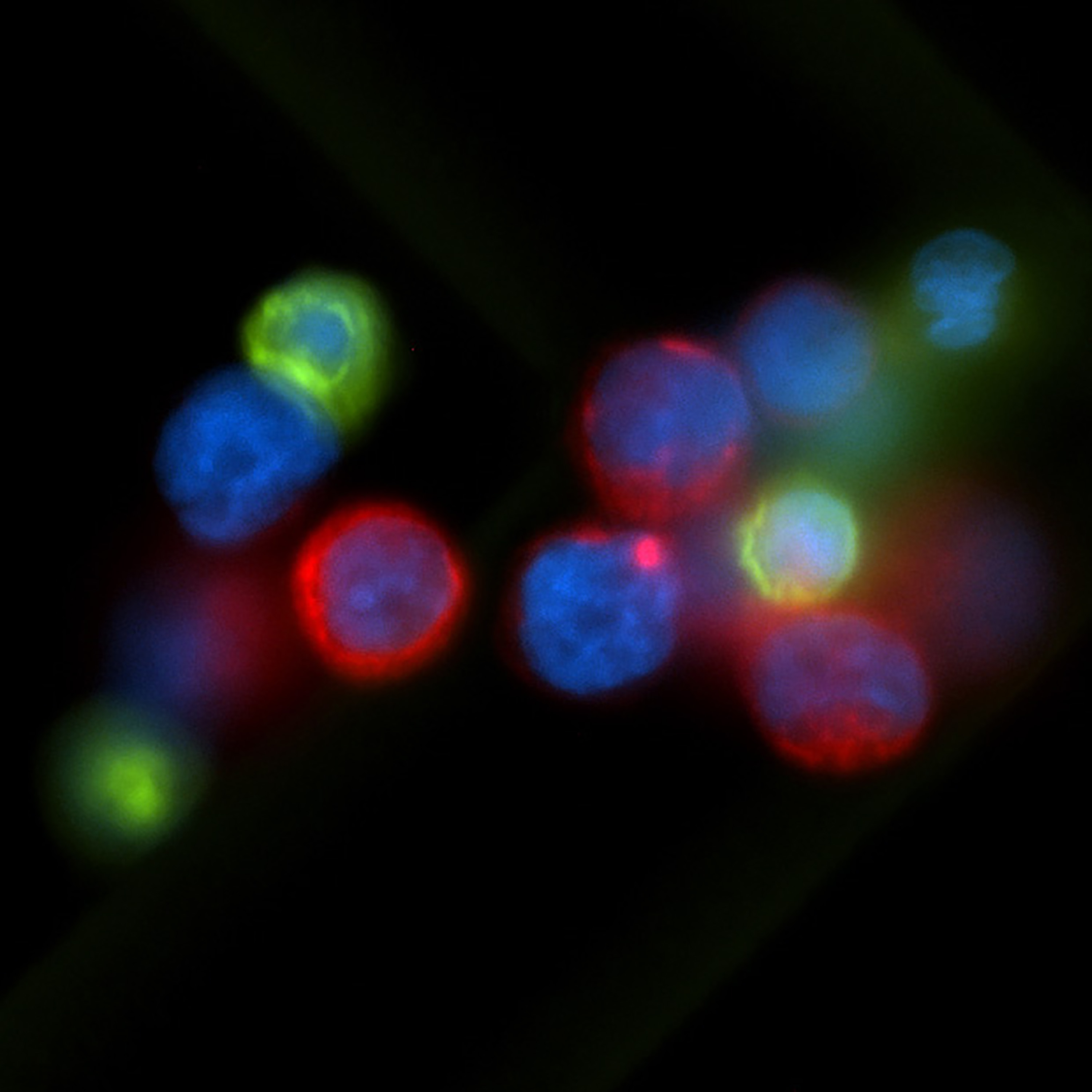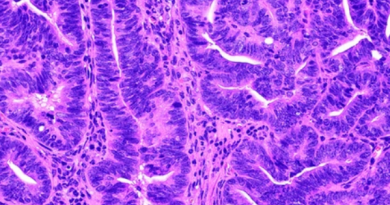Opening a window into the world of tumors
A tumor behaves like a community in which cancerous and normal cells interact with each other. In some cases, these interactions result in tumor growth, while in others the outcome is tumor elimination. If scientists could “open a window” into a tumor community and “witness” the roles played by normal and cancerous cells as they tip the balance in favor of tumor defeat or growth, it might be possible to develop improved therapies.
A team of researchers at Baylor College of Medicine and other institutions has “opened a window” into the world of a tumor using a novel computational approach that allows the researchers to identify the different types of cells in the tumor and to unveil how the interactions between cancer and normal cells may shape the fate of the tumor.
Dr. Aleksandar Milosavljevic (L) and Vitor Onuchic, molecular and human genetics graduate student, discuss how their new method of researching tumors may improve diagnosis and treatment.
“With our computational approach we can infer the cell type composition of breast tumors, detecting both normal and cancerous cell types,” said the first author of the paper, Vitor Onuchic, who is a graduate student in the Program in Structural and Computational Biology and Molecular Biophysics at Baylor in the Bioinformatics Research Laboratory. “We can also detect changes in the epigenomic and transcriptomic profiles of individual cell types, which indicate what parts of the genome – the genetic makeup of the cell – become activated or inactivated within each cell type, as the cancer progresses.”
“Without understanding the composition of tumors we couldn’t understand how cells engage in that disease-causing exchange of information,” said senior author Dr. Aleksandar Milosavljevic, professor of molecular and human genetics and director of the Program in Structural and Computational Biology and Molecular Biophysics at Baylor.
“By mapping cell-type composition and epigenomic changes we can better understand what is it that cells do to each other to promote cancer.”
The advantages of the new approach and major findings
“Previous approaches that looked at specific cell types within a tumor applied laboratory methods that physically separate and identify the different cell types,” said Onuchic. “This can be difficult, costly and time consuming, and preclude analyzing large numbers of cells. Another downside of this approach is that physically separating the different types of cells disrupts the interactions between the cells within the tissue, something we want to understand.”
With the new computational approach the researchers are able to look at how these cells interact in their native microenvironment without having to physically separate the different cell types.

“In addition, our approach allows us to look at a large number of tumor samples,” said Onuchic.
“We can reanalyze numerous data we already generated from tumors and extract different types of information from the same dataset without having to go back and process the original samples.”
With this new approach the researchers were able to estimate the level of immune cell infiltration within the tumor in a large collection of breast tumor samples from the Cancer Genome Atlas. They saw that for particular subtypes of breast tumors a higher level of immune cell infiltration resulted in better patient survival. The researchers also discovered that a shift from adipose (fatty) to fibrotic tissue creates a microenvironment rich in compounds that feed the growth of cancer cells.
“I am very excited about applying this type of new analysis to different types of tumors,” said Onuchic.
A part of the International Human Epigenome Consortium
This work is part of a collection of 41 papers published simultaneously by researchers from the International Human Epigenome Consortium (IHEC), which is at the vanguard of epigenomic research. The papers represent the most recent work by members of the consortium which are located in Canada, the European Union, Germany, Japan, Singapore and the United States.
“IHEC is the only international ‘omics’ consortium after the International Cancer Genome Consortium that has produced a bolus of joint publications of this kind,” said Milosavljevic. “My laboratory at Baylor was the Data Analysis and Coordination Center for the National Institutes of Health Roadmap Epigenome Consortium, which catalyzed the formation of IHEC and contributed the know-how to help launch the international projects. As a member of the Steering Committee of the Consortium, my continuous efforts over the last five years helped start the Consortium and led it to this point.”
The results appear in Cell Reports.
###
Other contributors to this work include Ryan J. Hartmaier, David N. Boone, Michael L. Samuels, Ronak Y. Patel, Wendy M. White, Vesna D. Garovic, Steffi Oesterreich, Matt E. Roth and Adrian V. Lee.
Financial support was provided in part by a grant from the Common Fund of the National Institutes of Health (Roadmap Epigenomics Program, grant U01 DA025956) and the Scientific Advisory Council award from Susan G. Komen for the Cure and the Hillman Foundation Fellow award. This study used University of Pittsburgh Cancer Institute (UPCI) Cancer Tissue and Research Pathology services supported by NIH Award P30CA047904. The authors also acknowledge the support of the Health Sciences Tissue Bank (HSTB) at the University of Pittsburgh.



